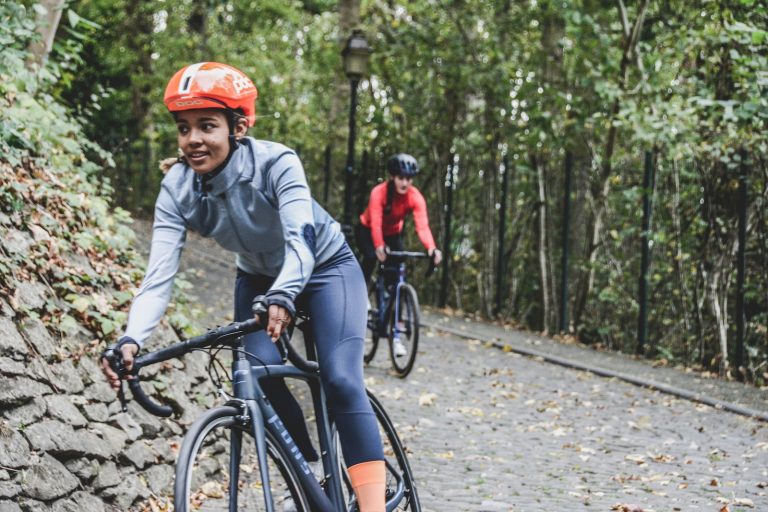In the world of health and fitness, one activity truly stands out for its dual benefits as an environmentally-friendly mode of transport and a veritable cornucopia of physical and mental health advantages – cycling. What may seem like a simple two-wheeled adventure can, in fact, be your ticket to a healthier lifestyle. From the humble suburban neighborhoods to the bustling city bike lanes, bicycles have become a beloved fixture of everyday life. But the appeal of cycling transcends its practicality. This popular activity opens the door to a myriad of health benefits, making every pedal stroke count.
Story Stages
The Physical Benefits of Cycling
Let’s begin with the significant impact cycling has on one’s cardiovascular health. Renowned for its ability to elevate heart rates safely, cycling stimulates the heart muscles, improving their strength and efficiency. Research has consistently shown a marked decrease in the risk of coronary heart disease by as much as 50% for regular cyclists. It’s a statistic brought to life by people like John, a 45-year-old man who fought back against heart disease armed with determination and a bicycle. Today, John rides hundreds of kilometers every year in charity rides, inspiring others with his story of recovery and resilience.
Cycling also packs a powerful punch when it comes to building muscle strength and flexibility. Every push of the pedal engages the quadriceps and hamstrings in your thighs, the calves in your lower legs, and the glutes in your buttocks. It’s a full lower-body workout on wheels. Moreover, cycling’s requirement for controlled movements and balance can enhance your core stability and postural control. In the words of a renowned trainer, “My athletes often find their cycling bibs as important as their dumbbells.”
The road to weight loss could well be paved with cycling trips. Engaging in a moderate one-hour cycling session can burn anywhere between 400 to 600 calories, depending on your weight and the intensity of your ride. Cycling does not merely burn calories; it also increases your metabolic rate, helping you continue to burn calories long after your ride is over. Sarah’s story is a testament to this. She incorporated cycling into her lifestyle, losing over 100 pounds within a year and discovering a new-found love for outdoor activities.
The Mental Benefits of Cycling
The benefits of cycling stretch beyond the physical, extending into mental health. Cycling, like many other forms of exercise, triggers the body’s release of endorphins, the ‘feel-good’ hormones that act as natural painkillers and mood elevators. These hormones play a crucial role in combating mental health issues like stress, anxiety, and depression. Regular cyclists often speak of the ‘cyclist’s high,’ a feeling of happiness and satisfaction that comes post-ride, similar to the well-known ‘runner’s high.’
Moreover, cycling has been linked to enhanced cognitive function. Health professionals explain that regular, sustained exercise increases blood flow to the brain, promoting the growth of new brain cells and connections, thereby boosting memory, creativity, and problem-solving abilities. Who would have thought that the road to a sharper mind begins with a bike ride?
Cycling for All Ages and Fitness Levels
One of the undeniable appeals of cycling lies in its inclusivity. As a low-impact activity that places minimal stress on joints, it’s suitable for everyone – from youngsters taking their first ride on training wheels to seniors looking to stay active. Regardless of age or current fitness level, anyone can reap the health benefits of cycling. The key is to start at a comfortable pace and then gradually increase both intensity and duration.
And let’s not forget safety. It is essential to prioritize safety when cycling, and using the appropriate safety gear is paramount. Helmets are a must, protecting riders from potentially serious head injuries. Knee and elbow pads can be beneficial, especially for off-road cyclists, while reflective clothing ensures visibility during early morning and evening rides. Cycling bibs, aside from being comfortable for long rides, can also offer some level of protection during a fall.
Cycling as a Gateway to an Active Lifestyle
Incorporating cycling into your daily routine could be your first step towards a more active and healthier lifestyle. Consider Jane’s story. Once a self-confessed couch potato, she decided to make a change and began cycling short distances. Initially, it was challenging, but with perseverance, she fell in love with the active lifestyle. She gradually incorporated other forms of exercise into her routine – from yoga to swimming and even weekend hiking. Today, Jane is a picture of health and wellness, all sparked by her decision to hop on a bicycle.
Conclusion
In summary, cycling is more than a form of transport or a leisurely pastime. It’s a heart-friendly, muscle-building, stress-reducing, and mind-enhancing activity. The health benefits of cycling are numerous and significant, making it an excellent addition to anyone’s lifestyle. Whether you’re looking to improve your physical fitness, boost your mental health, or kick-start an active lifestyle, cycling could be your answer. So why wait? Grab a helmet, slide into your cycling bibs, and set off on a journey to better health and wellness. After all, as they say, life is like riding a bicycle – to keep your balance, you must keep moving.
